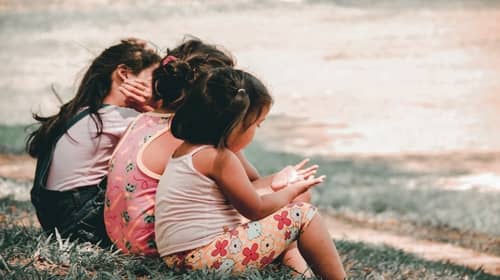Creating a Child Safe Organisation
Any organisation that works or comes into contact with children and young people should create a child safe culture. A child safe organisation respects the rights of young people and supports a nationally best practice approach to their wellbeing.
Authored by: Dominic Cudmore
Translate Text
Table of Contents
Creating a Child Safe Organisation
Any organisation that works or comes into contact with children and young people should create a child safe culture. A child safe organisation respects the rights of young people and supports a nationally consistent approach to their wellbeing. A report issued by The Royal Commission into Institutional Responses to Child Sexual Abuse discovered that organisations had failed children and young people in several ways, including:
- Failing to protect children and young people from abuse
- Failing to listen to children and young people’s accounts of abuse
- Failing to respond appropriately when abuse was discovered
Child safe standards are recommended for all organisations to support the best interests of young people and children and young people. When an organisation values and prioritises the needs and safety of children and young people, it creates a healthier environment that aligns with the organisation’s mission/purpose.
What is a Child Safe Organisation?
A child safe organisation does more than just focus on specific policies. It creates an environment that promotes health and protection in a way that children and young people can grow, learn, and play. Harm to children and young people encompasses neglect, emotional abuse, physical abuse, sexual abuse, bullying, accidental injury, or exposure to physical hazards.
A child safe organisation:
- Values children and young people
- Creates an environment where children and young people’s safety is a top priority in the organisation’s thinking, values, and actions
- Creates an environment where harm to children and young people is likely to be identified
- Creates conditions that minimise the likelihood of harm to children and young people
- Has a process in place to address concerns and complaints about harm to children and young people
In a child safe organisation, to children and young people should feel safe, happy, and engaged. They should be encouraged to participate actively in the organisation and be aware that they are valued and heard. Committed leadership, governance, and culture should align in order to foster the wellbeing of children and young people. When complaints or concerns arise, the organisation should ensure that there are systems in place to respond in a professional and timely fashion.
The National Principles for Child Safe Organisations
The National Principles for Child Safe Organisations (National Principles) create a nationally-aligned approach to child safety and reflect the standards recommended by the Royal Commission into Institutional Responses to Child Sexual Abuse. The National Principles help protect children and young people from all types of harm and provide guidance to organisations on best practice.
The 10 National Principles are as follows:
- Child safety and wellbeing are embedded in culture, leadership, and governance.
- Children and young people are taken seriously, informed of their rights, and participate in decisions that affect them.
- Families and communities promote child safety.
- Policies and practices respect diverse needs and uphold equity.
- People working with children are suitable and supported to practice child safety and wellbeing values.
- You respond to complaints with child-focused processes.
- Volunteers and staff have the skills and knowledge to keep young people safe with ongoing training.
- Physical and online environments promote safety and minimise the possibility of harm.
- You regularly review and improve the implementation of National Principles.
- Policies and procedures document how your organisation prioritizes child safety.
Children and young people have a right to be emotionally, physically, and mentally safe. With the guidance of your organisation’s leadership, each member of your organisation should uphold child safety principles. A child safe organisation places the best interests of children and young people first at all times, makes a public commitment to the safety of children and young people, and supports children and young people so they can safely share their concerns with the organisation.
Implementing the National Principles
There are many different types and sizes of not-for-profit organisations engaging with children and young people. The National Principles should guide leaders, staff and volunteers as they commit to creating a culture that supports and protects children and young people and values their views.
You can use our Self-Assessment Checklist [link to tool] to reflect on child safe practices and find areas where your organisation might need improvement. The checklist will help you improve child safe practices through concrete actions that align with National Principles.
Benefits of a Child Safe Organisation
An organisation that values the most vulnerable people sets an excellent example. By protecting children and young people, your organisation will help to foster a culture that is safer, more inclusive, and more trusted by everyone involved.
Child safe organisations:
- Let children and young people meet new friends and develop new skills in a safe environment
- Go beyond policies and procedures so as to create a culture that is more healthy, supportive, and safe
- Align with national expectations and guidelines for child safety
- Support parents/carers and the broader community by creating a safe space for children and young people
- Instil in children and young people at an early age the reality that they possess rights, that their views matter, and that the organisation will listen to their concerns or fears
- Build trust with families and communities
By prioritising child safe principles, your organisation can set an example for others and support your organisation’s reputation as a trusted and responsible operator. Most importantly, children and young people will feel safe, informed, protected, and confident in their rights.
Conclusion
Your child safe self-assessment checklist will help you learn more about the National Principles, monitor improvement, and ensure that the wellbeing of children and young people is embedded in your organisation’s culture, governance, and leadership.
National Voice for Our (SNAICC) and the Victorian Aboriginal Child Care Agency (VACAA) created an animated video called Keeping Our Kids Safe: Understanding Cultural Safety in Child Safe Organisations. This is an excellent resource for understanding the National Principles better.


